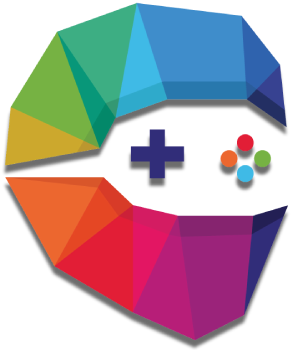In today’s rapidly evolving tech landscape, the way we perceive and utilize gadgets has completely transformed. Not long ago, smartphones and basic wearables served singular purposes—calls, texts, simple health tracking. Now, we’re immersed in a world where devices are sophisticated, multi-functional, and deeply integrated into daily life. The recent wave of gadget releases and discounts exemplifies this trend, reflecting a swift acceleration toward smarter, more intuitive devices that seamlessly blend style, health, and connectivity.
What stands out among these innovations is the emphasis on user-centered design. Devices like Samsung’s Galaxy Watch 8 are not just smartwatches—they’re holistic health companions with powerful features such as an Antioxidant Index and Running Coach. These features exemplify a shift from mere step counters to proactive health management tools. The design change, favoring a squircle shape, offers more comfort and better fit, highlighting how aesthetic decisions increasingly prioritize user experience. The device’s ability to remain slim yet long-lasting on a single charge demonstrates that efficiency and style can go hand in hand, pushing the boundaries of what a wearable can be.
This focus on ergonomic, aesthetic, and functional improvements signals a smarter approach that puts user comfort and health insights at the forefront. Devices are no longer just gadgets; they’re personal assistants with nuanced understanding and tangible benefits. The implications extend beyond individual convenience—they are shaping a future where our health and lifestyle choices are monitored and optimized with precision that was once only possible in science fiction.
Accessibility and Affordability: Breaking Barriers to High-Tech Adoption
A significant aspect driving the evolution of consumer gadgets is affordability. The market’s current landscape offers top-tier discounts on premium tech, making advanced devices more accessible to the average consumer. For instance, the Galaxy Watch 8, normally priced higher, is now available at a substantial discount, pushing its price point to be comparable with previous generations. Such pricing strategies suggest brands are eager to attract a broader audience, not just early adopters with deep pockets.
This democratization of access extends to gaming accessories, where products like the GameSir Super Nova Wireless Controller have seen price reductions to just $39.99. This controller packs impressive features—Hall Effect joysticks, customizable buttons, RGB lighting, and multi-platform support—making high-quality gaming peripherals attainable without breaking the bank. The same goes for audio innovation, with JBL’s Tour Pro 3 earbuds being slashed to around $250, offering excellent noise cancellation, comfort, and a sleek integrated touchscreen charging case. These price cuts challenge the stereotype that innovation must be prohibitively expensive, reinforcing a broader societal trend toward inclusivity in technology.
Moreover, Ugreen’s Uno charger, with its playful pixelated face LED display, highlights how affordability can go hand-in-hand with personality and style. Priced at under $20, it delivers fast charging capabilities—half an hour to refill an iPhone 15—and adds a whimsical touch rarely seen in tech accessories. This shift indicates that consumers are increasingly demanding not only functionality but also a device personality, fostering a more engaging user experience at a fraction of the previous costs.
Innovation as a Competitive Edge: The Future of Consumer Tech
The current market also indicates an arms race in innovation—a battleground where brands compete to offer smarter, more adaptable gadgets. Samsung’s introduction of its Gemini AI, accessible directly from the Galaxy Watch 8, exemplifies this push. Instead of relying solely on traditional app functions, these devices now incorporate AI-powered assistants that respond to natural language commands, help plan workouts, or even answer complex questions about health and wellness.
Furthermore, the integration of sensors capable of detecting blood oxygen levels, sleep patterns, and dietary intake in wearables reveals an industry shifting towards predictive health management. Companies are investing in features that give users actionable insights, transforming passive data collection into proactive wellness support. The ability of these devices to monitor and respond to real-time health metrics can potentially redefine the healthcare industry by shifting some responsibility from clinics and labs to everyday gadgets.
This trend extends beyond health. Gaming controllers like the GameSir Super Nova—offering wireless connectivity, customizable features, and high polling rates—highlight how gaming and entertainment are evolving into more personalized, immersive experiences. The fact that such advanced peripherals are now within reach for casual gamers illustrates a broader deployment of innovation, where high-end technology becomes the new standard for everyday use.
The future, therefore, is not just about acquiring new devices but integrating intelligence and personalization into each interaction. As brands push boundaries, the line between utility and entertainment blurs, turning gadgets into essential extensions of ourselves.
Challenging the Status Quo: From Tech Gadgets to Lifestyle Statements
In an era oversaturated with tech choices, the ones that succeed are those that challenge the status quo—those that deliver more than just specifications but also create emotional and aesthetic appeal. The playful LED display on Ugreen’s charger exemplifies this principle, transforming a simple accessory into a personality-driven statement piece. It’s a reminder that gadgets can serve as conversation starters, reflections of personal identity, and tools for enhancing everyday life.
The ongoing discounts on these gadgets indicate a shift in consumer mindset: affordability combined with high-performance features fosters loyalty and encourages experimentation. The availability of powerful features like AI assistants, health sensors, and customizable controls at accessible prices empowers users to take full advantage of evolving technology without feeling priced out.
As we look toward the future, it becomes clear that the evolution of gadgets is less about the “latest” feature and more about how these innovations can be seamlessly woven into our lifestyle—making daily routines smarter, healthier, and more enjoyable. With each innovative release or attractive discount, the barriers fall further, catalyzing a societal shift toward technology-enabled living that is personalized, affordable, and inherently more human-centric.
Just as the technology landscape broadens its horizons, so too should our expectations. Gadgets are no longer just tools—they are becoming integral to shaping identities, health, and leisure in unprecedented ways. Embracing this change with critical enthusiasm ensures we don’t just consume technology—we evolve with it.

